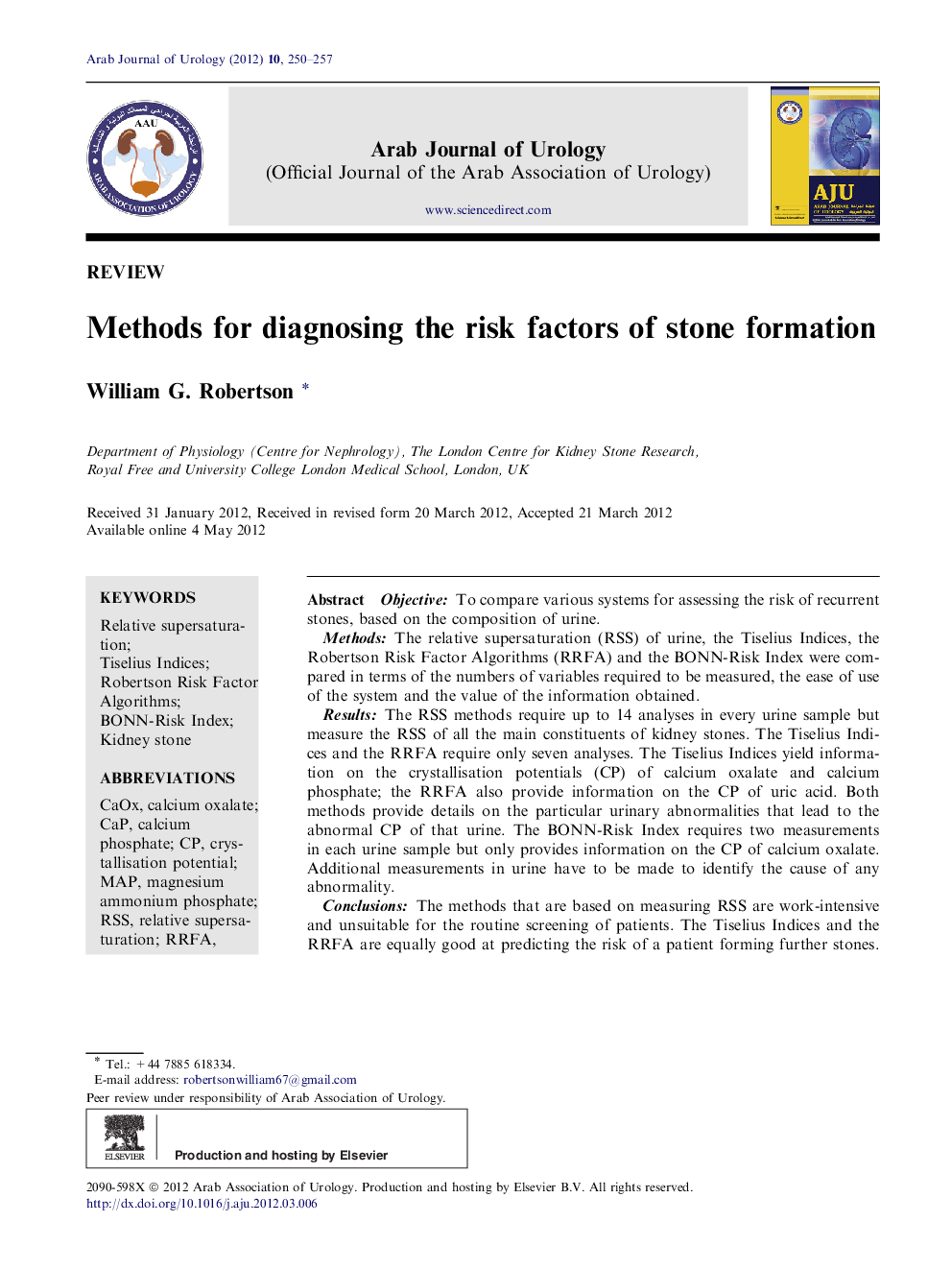| کد مقاله | کد نشریه | سال انتشار | مقاله انگلیسی | نسخه تمام متن |
|---|---|---|---|---|
| 4268153 | 1610745 | 2012 | 8 صفحه PDF | دانلود رایگان |

ObjectiveTo compare various systems for assessing the risk of recurrent stones, based on the composition of urine.MethodsThe relative supersaturation (RSS) of urine, the Tiselius Indices, the Robertson Risk Factor Algorithms (RRFA) and the BONN-Risk Index were compared in terms of the numbers of variables required to be measured, the ease of use of the system and the value of the information obtained.ResultsThe RSS methods require up to 14 analyses in every urine sample but measure the RSS of all the main constituents of kidney stones. The Tiselius Indices and the RRFA require only seven analyses. The Tiselius Indices yield information on the crystallisation potentials (CP) of calcium oxalate and calcium phosphate; the RRFA also provide information on the CP of uric acid. Both methods provide details on the particular urinary abnormalities that lead to the abnormal CP of that urine. The BONN-Risk Index requires two measurements in each urine sample but only provides information on the CP of calcium oxalate. Additional measurements in urine have to be made to identify the cause of any abnormality.ConclusionsThe methods that are based on measuring RSS are work-intensive and unsuitable for the routine screening of patients. The Tiselius Indices and the RRFA are equally good at predicting the risk of a patient forming further stones. The BONN-Risk Index provides no additional information about the causative factors for any abnormality detected.
Journal: Arab Journal of Urology - Volume 10, Issue 3, September 2012, Pages 250–257